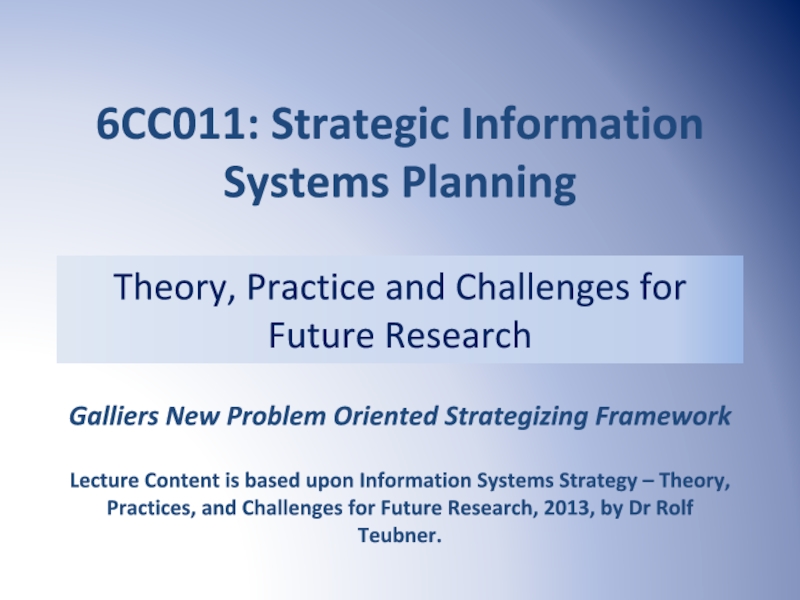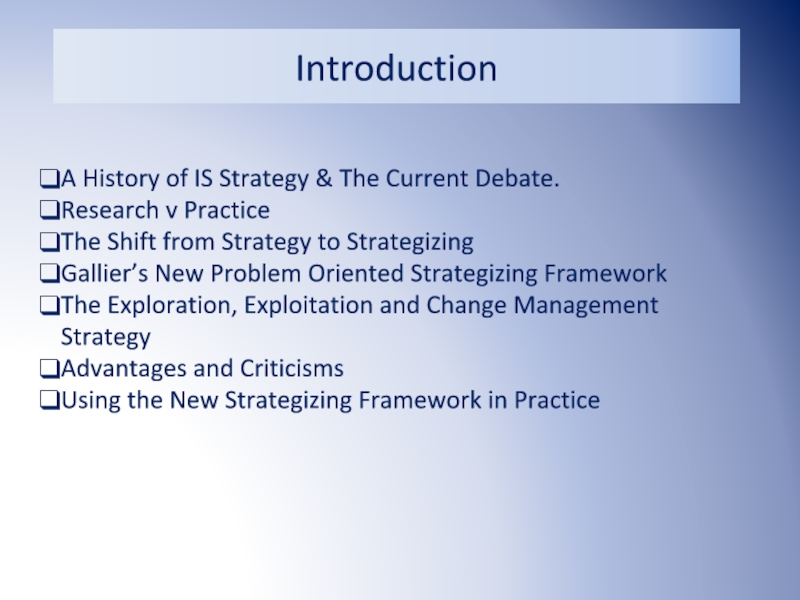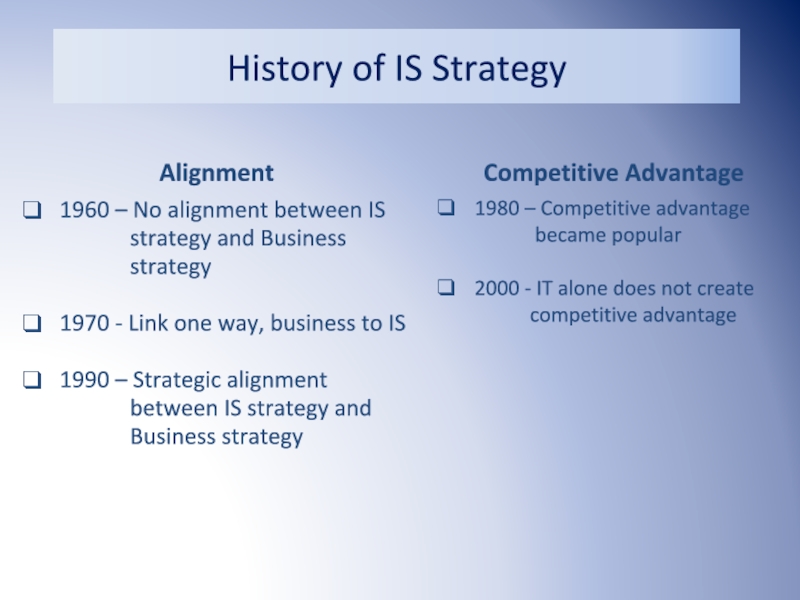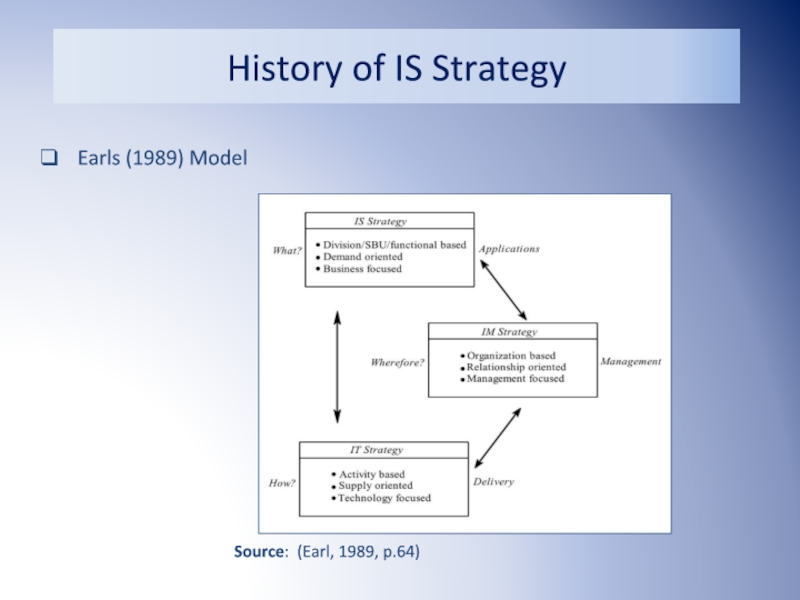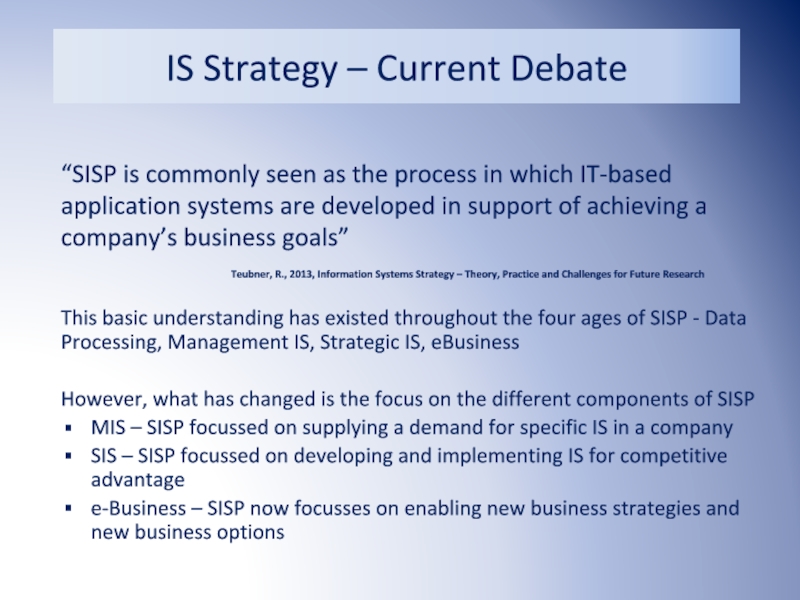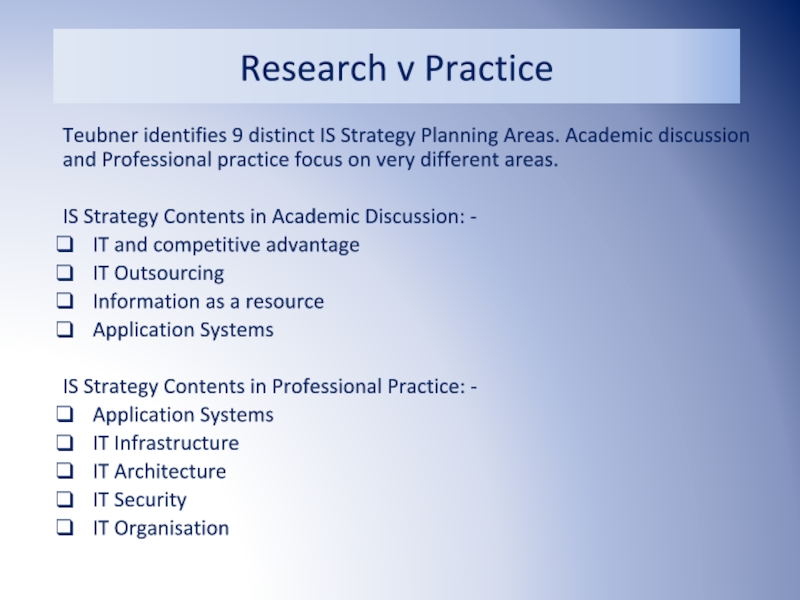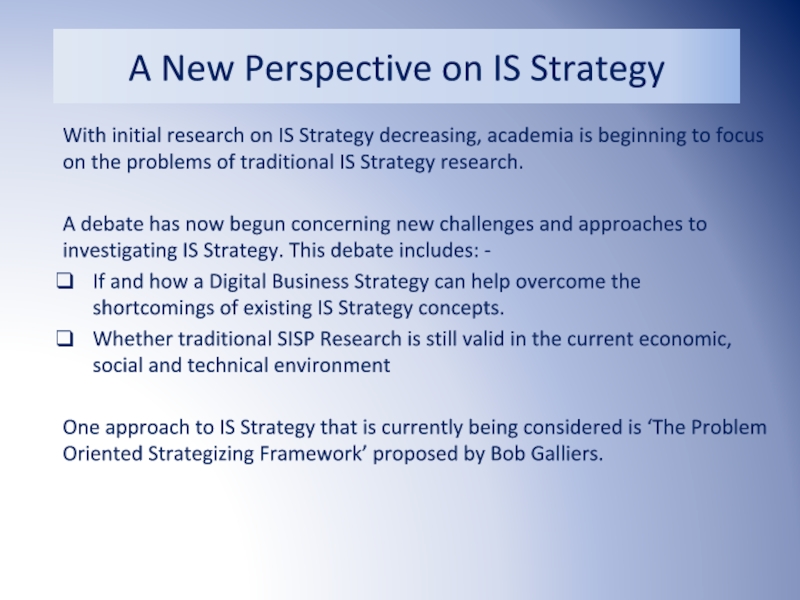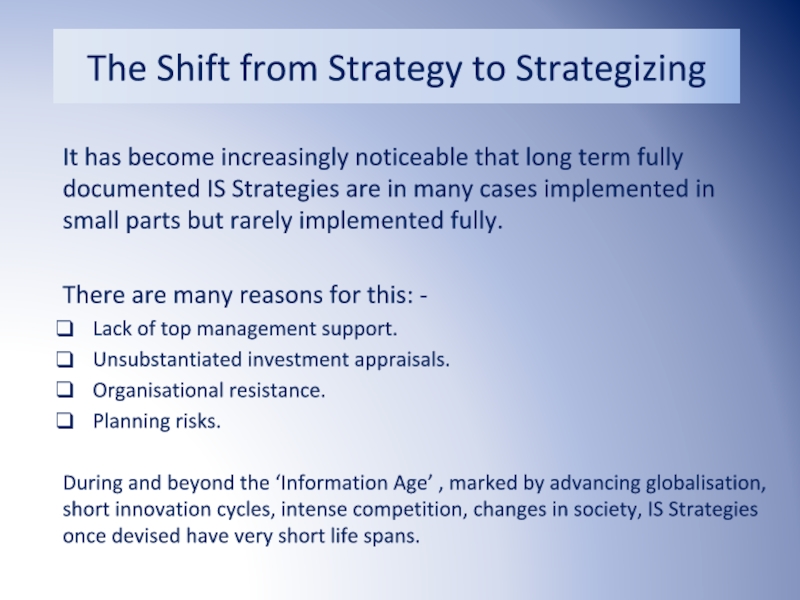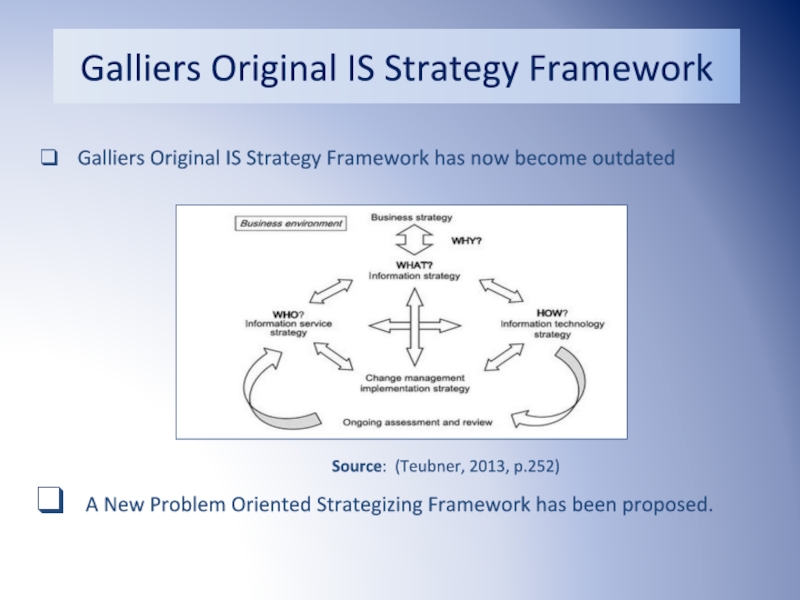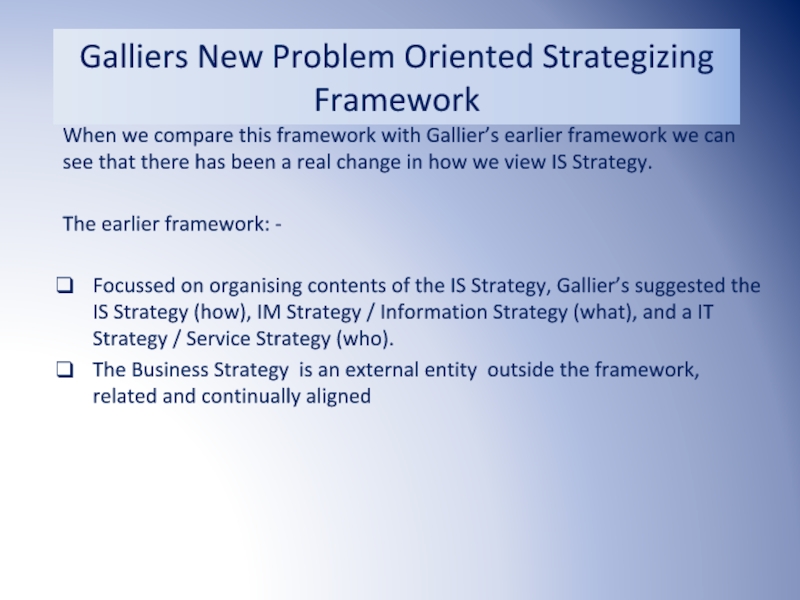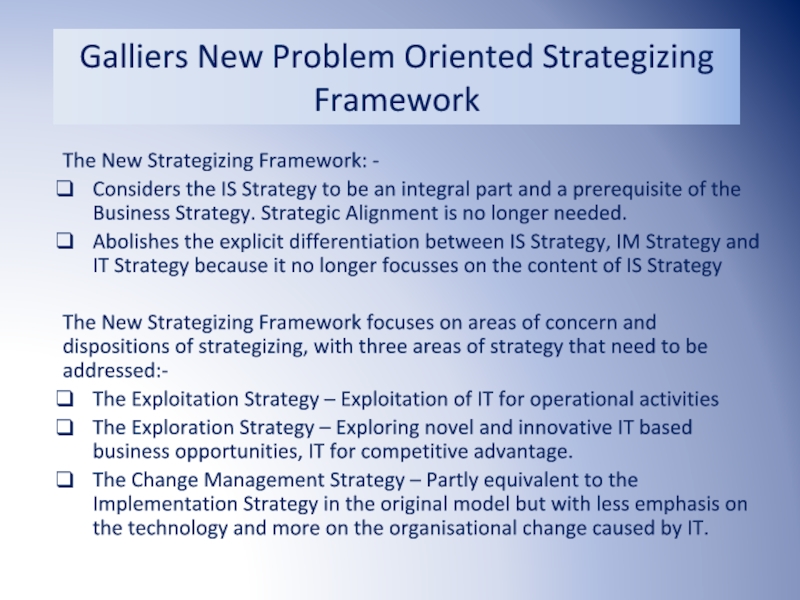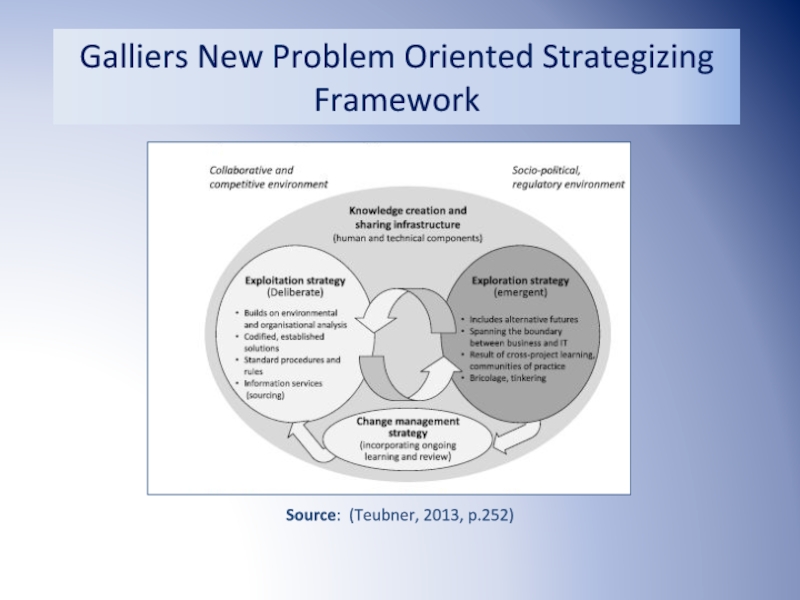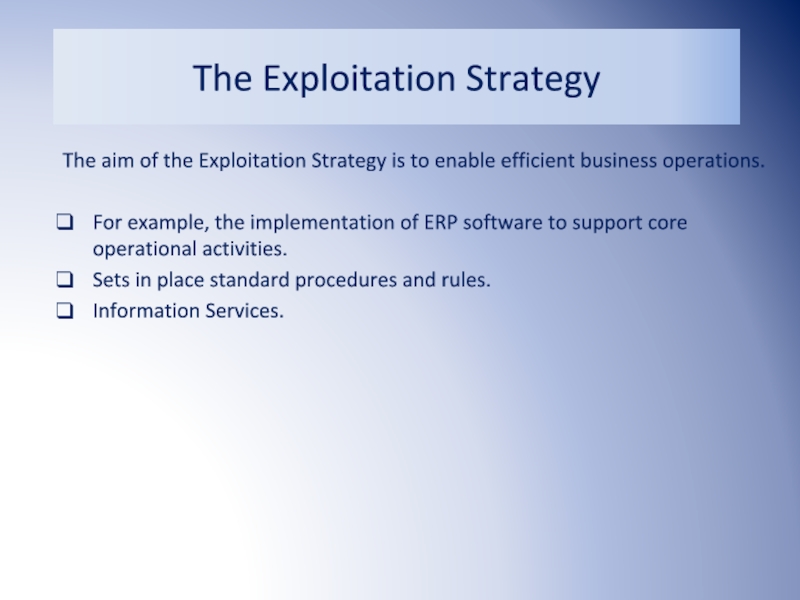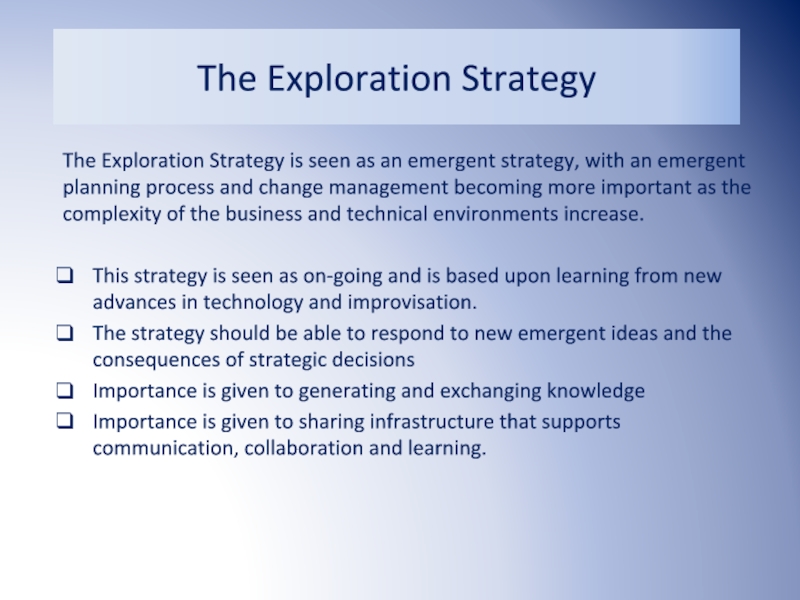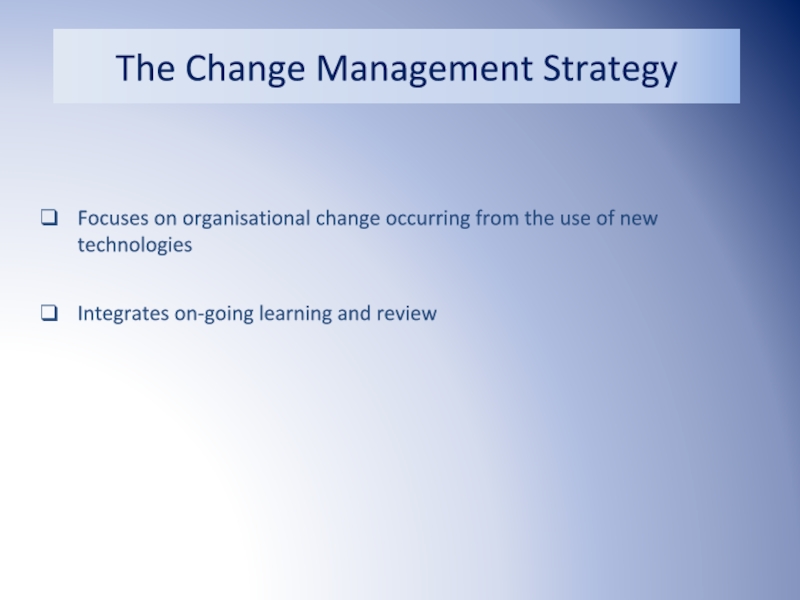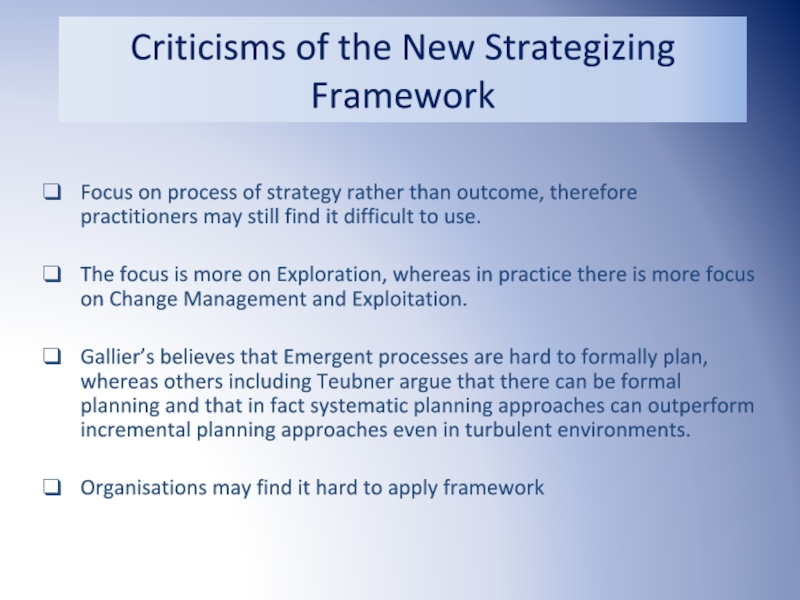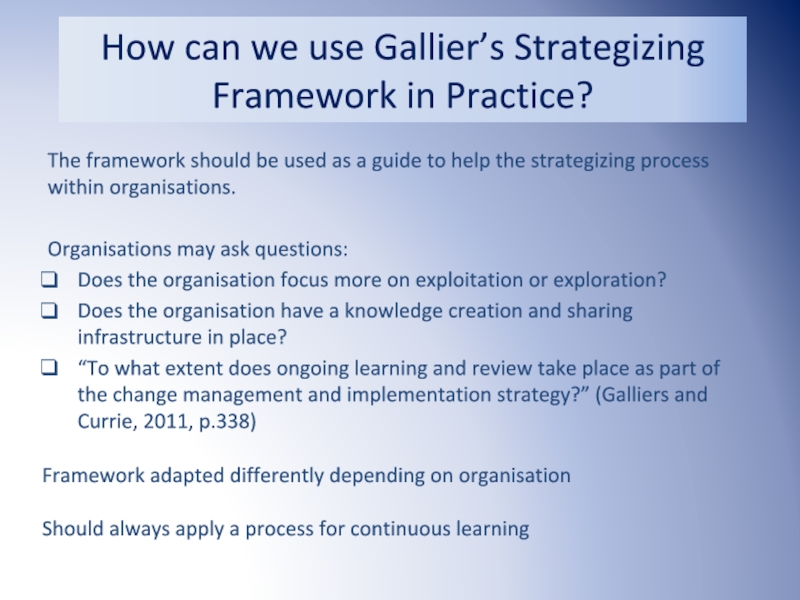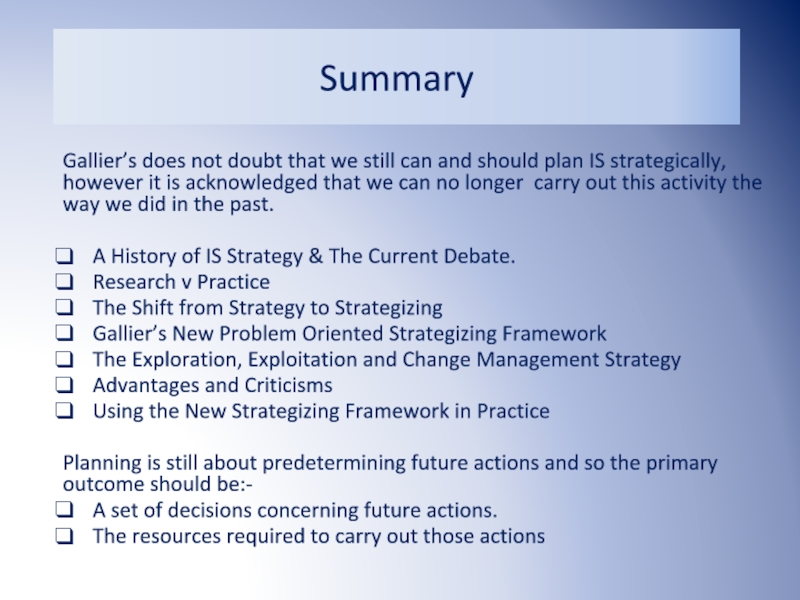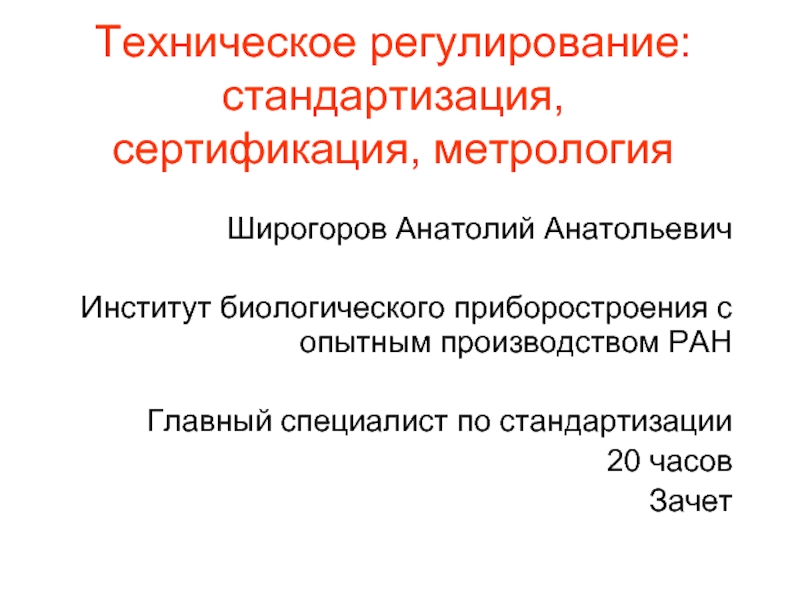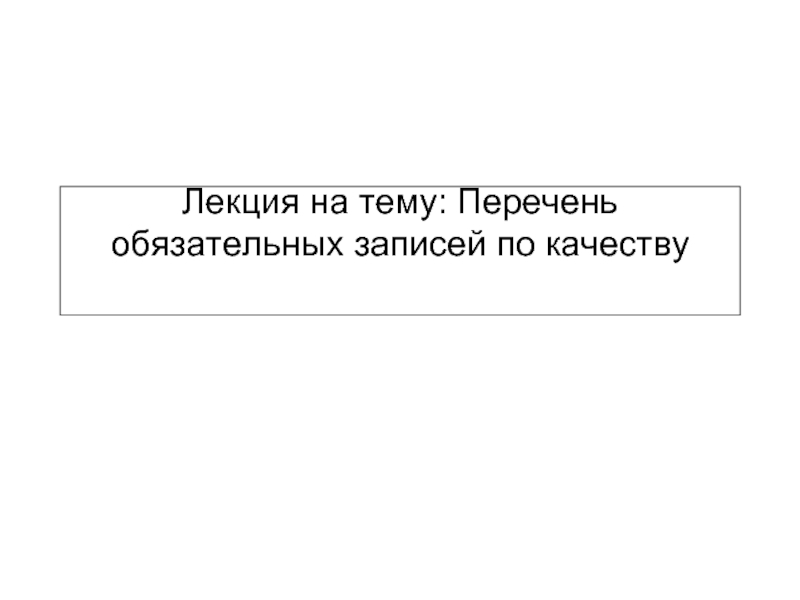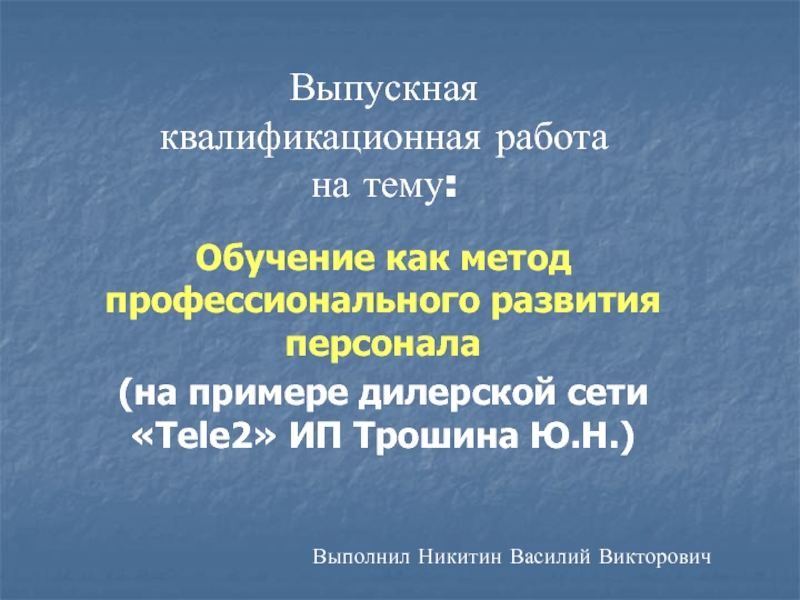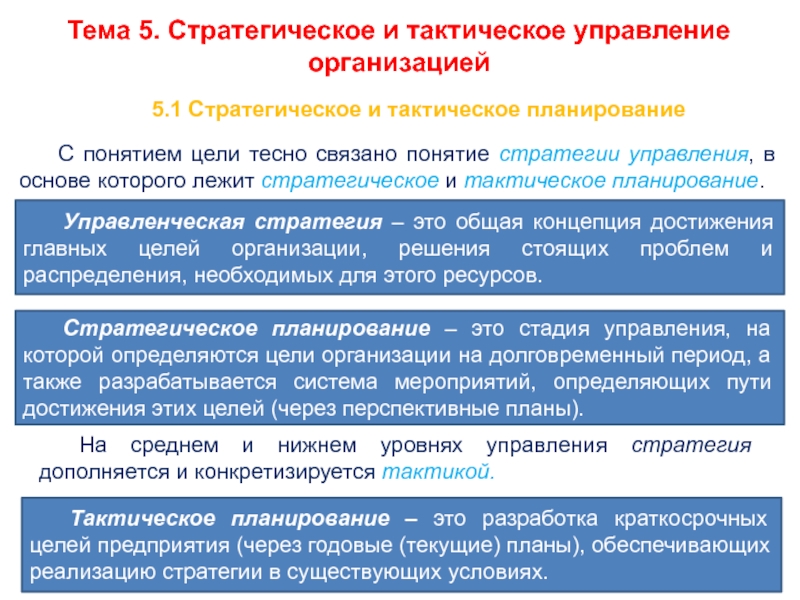Theory, Practice and Challenges for Future Research
- Главная
- Разное
- Дизайн
- Бизнес и предпринимательство
- Аналитика
- Образование
- Развлечения
- Красота и здоровье
- Финансы
- Государство
- Путешествия
- Спорт
- Недвижимость
- Армия
- Графика
- Культурология
- Еда и кулинария
- Лингвистика
- Английский язык
- Астрономия
- Алгебра
- Биология
- География
- Детские презентации
- Информатика
- История
- Литература
- Маркетинг
- Математика
- Медицина
- Менеджмент
- Музыка
- МХК
- Немецкий язык
- ОБЖ
- Обществознание
- Окружающий мир
- Педагогика
- Русский язык
- Технология
- Физика
- Философия
- Химия
- Шаблоны, картинки для презентаций
- Экология
- Экономика
- Юриспруденция
6CC011: strategic information systems planning. Theory, practice and challenges for future research презентация
Содержание
- 1. 6CC011: strategic information systems planning. Theory, practice and challenges for future research
- 2. Introduction Introduction A History of IS
- 3. Alignment 1960 – No alignment between IS
- 4. Earls (1989) Model Source: (Earl, 1989, p.64) History of IS Strategy
- 5. IS Strategy – Current Debate Teubner, R.,
- 6. Research v Practice Academic interest in SISP
- 7. Teubner identifies 9 distinct IS Strategy Planning
- 8. With initial research on IS Strategy decreasing,
- 9. It has become increasingly noticeable that long
- 10. Galliers Original IS Strategy Framework has now
- 11. Galliers New Problem Oriented Strategizing Framework When
- 12. Galliers New Problem Oriented Strategizing Framework The
- 13. Source: (Teubner, 2013, p.252) Galliers New Problem Oriented Strategizing Framework
- 14. The Exploitation Strategy The aim of the
- 15. The Exploration Strategy The Exploration Strategy is
- 16. Focuses on organisational change occurring from the
- 17. Addresses past issues of IS Strategy Difficulties
- 18. Focus on process of strategy rather than
- 19. The framework should be used as a
- 20. Summary Gallier’s does not doubt that we
Слайд 16CC011: Strategic Information Systems Planning
Galliers New Problem Oriented Strategizing Framework
Lecture Content
Слайд 2Introduction
Introduction
A History of IS Strategy & The Current Debate.
Research v Practice
The
Gallier’s New Problem Oriented Strategizing Framework
The Exploration, Exploitation and Change Management Strategy
Advantages and Criticisms
Using the New Strategizing Framework in Practice
Слайд 3Alignment
1960 – No alignment between IS
strategy and Business
strategy
1970 - Link one way, business to IS
1990 – Strategic alignment
between IS strategy and
Business strategy
Competitive Advantage
1980 – Competitive advantage
became popular
2000 - IT alone does not create
competitive advantage
History of IS Strategy
Слайд 5IS Strategy – Current Debate
Teubner, R., 2013, Information Systems Strategy –
“SISP is commonly seen as the process in which IT-based application systems are developed in support of achieving a company’s business goals”
This basic understanding has existed throughout the four ages of SISP - Data Processing, Management IS, Strategic IS, eBusiness
However, what has changed is the focus on the different components of SISP
MIS – SISP focussed on supplying a demand for specific IS in a company
SIS – SISP focussed on developing and implementing IS for competitive advantage
e-Business – SISP now focusses on enabling new business strategies and new business options
Слайд 6Research v Practice
Academic interest in SISP has decreased significantly over the
The reasons for the increase in business interest are:-
Information Systems now exist throughout organisations
Scarcity of resources forces organisations to carefully consider how they use I.T
One possible reason for this mismatch is that IS Strategy and SISP are fully understood in academia, only knowledge transfer from research to practice is missing.
Another possible reason is that practice and research have different understandings of IS Strategy and its contents.
In many cases the way in which practice interprets IS Strategy hardly corresponds to academic texts
Слайд 7Teubner identifies 9 distinct IS Strategy Planning Areas. Academic discussion and
IS Strategy Contents in Academic Discussion: -
IT and competitive advantage
IT Outsourcing
Information as a resource
Application Systems
IS Strategy Contents in Professional Practice: -
Application Systems
IT Infrastructure
IT Architecture
IT Security
IT Organisation
Research v Practice
Слайд 8With initial research on IS Strategy decreasing, academia is beginning to
A debate has now begun concerning new challenges and approaches to investigating IS Strategy. This debate includes: -
If and how a Digital Business Strategy can help overcome the shortcomings of existing IS Strategy concepts.
Whether traditional SISP Research is still valid in the current economic, social and technical environment
One approach to IS Strategy that is currently being considered is ‘The Problem Oriented Strategizing Framework’ proposed by Bob Galliers.
A New Perspective on IS Strategy
Слайд 9It has become increasingly noticeable that long term fully documented IS
There are many reasons for this: -
Lack of top management support.
Unsubstantiated investment appraisals.
Organisational resistance.
Planning risks.
During and beyond the ‘Information Age’ , marked by advancing globalisation, short innovation cycles, intense competition, changes in society, IS Strategies once devised have very short life spans.
The Shift from Strategy to Strategizing
Слайд 10Galliers Original IS Strategy Framework has now become outdated
A New
Source: (Teubner, 2013, p.252)
Galliers Original IS Strategy Framework
Слайд 11Galliers New Problem Oriented Strategizing Framework
When we compare this framework with
The earlier framework: -
Focussed on organising contents of the IS Strategy, Gallier’s suggested the IS Strategy (how), IM Strategy / Information Strategy (what), and a IT Strategy / Service Strategy (who).
The Business Strategy is an external entity outside the framework, related and continually aligned
Слайд 12Galliers New Problem Oriented Strategizing Framework
The New Strategizing Framework: -
Considers the
Abolishes the explicit differentiation between IS Strategy, IM Strategy and IT Strategy because it no longer focusses on the content of IS Strategy
The New Strategizing Framework focuses on areas of concern and dispositions of strategizing, with three areas of strategy that need to be addressed:-
The Exploitation Strategy – Exploitation of IT for operational activities
The Exploration Strategy – Exploring novel and innovative IT based business opportunities, IT for competitive advantage.
The Change Management Strategy – Partly equivalent to the Implementation Strategy in the original model but with less emphasis on the technology and more on the organisational change caused by IT.
Слайд 14The Exploitation Strategy
The aim of the Exploitation Strategy is to enable
For example, the implementation of ERP software to support core operational activities.
Sets in place standard procedures and rules.
Information Services.
Слайд 15The Exploration Strategy
The Exploration Strategy is seen as an emergent strategy,
This strategy is seen as on-going and is based upon learning from new advances in technology and improvisation.
The strategy should be able to respond to new emergent ideas and the consequences of strategic decisions
Importance is given to generating and exchanging knowledge
Importance is given to sharing infrastructure that supports communication, collaboration and learning.
Слайд 16Focuses on organisational change occurring from the use of new technologies
Integrates
The Change Management Strategy
Слайд 17Addresses past issues of IS Strategy
Difficulties of Alignment
Competitive advantage, now we
Exploration Strategy now gives flexibility
Formal approach replaced with an informal approach based on-going learning and sharing of knowledge
Relevant in today's continually changing economic and technical environment
Advantages of Gallier’s New Problem Oriented Strategizing Framework
Слайд 18Focus on process of strategy rather than outcome, therefore practitioners may
The focus is more on Exploration, whereas in practice there is more focus on Change Management and Exploitation.
Gallier’s believes that Emergent processes are hard to formally plan, whereas others including Teubner argue that there can be formal planning and that in fact systematic planning approaches can outperform incremental planning approaches even in turbulent environments.
Organisations may find it hard to apply framework
Criticisms of the New Strategizing Framework
Слайд 19The framework should be used as a guide to help the
Organisations may ask questions:
Does the organisation focus more on exploitation or exploration?
Does the organisation have a knowledge creation and sharing infrastructure in place?
“To what extent does ongoing learning and review take place as part of the change management and implementation strategy?” (Galliers and Currie, 2011, p.338)
Framework adapted differently depending on organisation
Should always apply a process for continuous learning
How can we use Gallier’s Strategizing Framework in Practice?
Слайд 20Summary
Gallier’s does not doubt that we still can and should plan
A History of IS Strategy & The Current Debate.
Research v Practice
The Shift from Strategy to Strategizing
Gallier’s New Problem Oriented Strategizing Framework
The Exploration, Exploitation and Change Management Strategy
Advantages and Criticisms
Using the New Strategizing Framework in Practice
Planning is still about predetermining future actions and so the primary outcome should be:-
A set of decisions concerning future actions.
The resources required to carry out those actions
